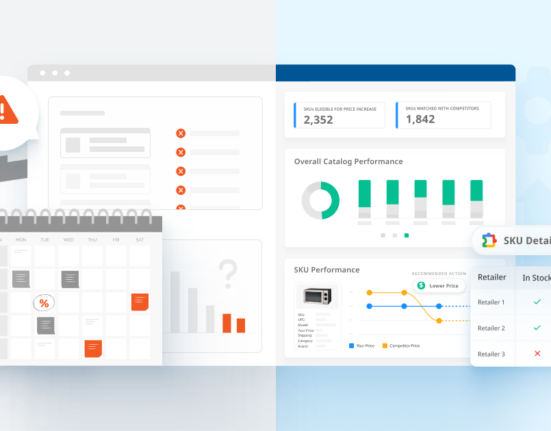Any retailer can tell you that putting together a perfect pricing strategy is not easy. Finding that sweet spot for your products’ prices take a lot of time, effort, and resources. How do retailers approach pricing? For many, it’s a manual process, often involving Excel sheets. For others, the answer lies in an automated solution.
We’re here to explain why that automated solution—a pricing engine, specifically—is ultimately beneficial for your business.
1. Pricing Manually is Hard
Some retailers have pricing analysts who search the web for competitor prices and use that data to fill out a spreadsheet, then determine the prices for their own products from there. These teams are extremely beneficial for retailers, but a manual workflow leaves a lot of room for inefficiencies and human error.
Signing up for an automated pricing solution doesn’t mean that you have to get rid of this team. If anything, a pricing engine is a tool that can help them do their jobs better. Checking the web for prices and trends is tedious at best. By introducing an automated pricing solution, you can allocate this team’s time to other merchandising tasks that need to be accomplished.
2. Pricing Engines Do More Than Just Lower Prices
Many retailers believe the sole purpose of a pricing engine is to decrease prices to attract customers to their store. Since some of these retailers have limited competition, they don’t see the point of having a pricing engine to provide them with competitive insights. Why decrease the price of an item that doesn’t warrant intense competition? Well, the cool thing about pricing engines is that they do so much more than that.
An intelligent pricing tool will understand when you’re the only seller of certain items in your assortment so it can increase the price of the product to capitalize on the opportunity and maximize margins. It can also help you match the prices of “like products,” as in products that could be used as a substitute for your unique item. This way all of your bases are covered and you remain competitive no matter what the circumstances are.
3. Pricing Can Bring Value to All Parts of Your Business
You need to make sure that your price is right in order to be successful. Price is a major factor in a customer’s purchase decision, and you should know that if your prices are out of line, a shopper may not even give your store a chance. Pricing strengthens different parts of your business, and being able to use it as a point of differentiation can give you a major competitive advantage.
What we mean by this is that you can use your prices to justify marketing expenditure. Being able to advertise the fact that you provide the lowest price is possible with any competitive monitoring software. It can empower your marketing efforts and help boost your profits while staying competitive.
4. You Need Competitive Intelligence
With a pricing engine, you can gain competitive intelligence without resorting to gray-hat or black-hat tactics. Imagine having your competitor’s playbook to map out your business decisions based on their recent pricing history. That’s what it’s like to have competitive insights. Storing your competitor’s data in one place can give you the information you need to beat them at the shelf.
Gaining a better understanding of your competitors can help you grasp what it’s going to take for you to compete with them. You’re not just getting pricing data with this type of software—depending on the platform, you can also get assortment data and other metrics. That way, you can perform a gap analysis between you and your competition.
Pricing strengthens different parts of your business, and being able to use it as a point of differentiation can give you a major competitive advantage.
5. Engines Will Not Drive Your Prices to the Bottom.
Many automated pricing solutions are often synonymous with price wars. Lots of competitors will drop their prices drastically low because they think that retailers with automated repricers will follow the plunge and destroy their margins. However, that doesn’t have to be the case. With price guards in place, your minimum and maximum price can prevent a drastic hit to your margins or reputation.
Pricing software can actually be the pacifier in the long, twisted journey retailers often take to a price war. Setting minimum and maximum prices are a necessity, not only to your margins but to your brand. Sporadically fluctuating prices can hurt brand image, and that’s what pricing engines want to prevent. Automated repricing can not only help you stay competitive, but it can also help maintain your brand image.
Pricing engines do so much more than simply lower your prices. They provide retailers with actionable insights to help them stay competitive and profitable. Do your research to find a safe and reliable pricing engine that will treat your pricing carefully. Because after all, finding the right price is stressful enough as it is.
Editor’s Note: Contributing writer is Brian Smyth. This post was originally published in May 2015 and has since been updated and refreshed for readability and accuracy.











2 Comments
Comments are closed.